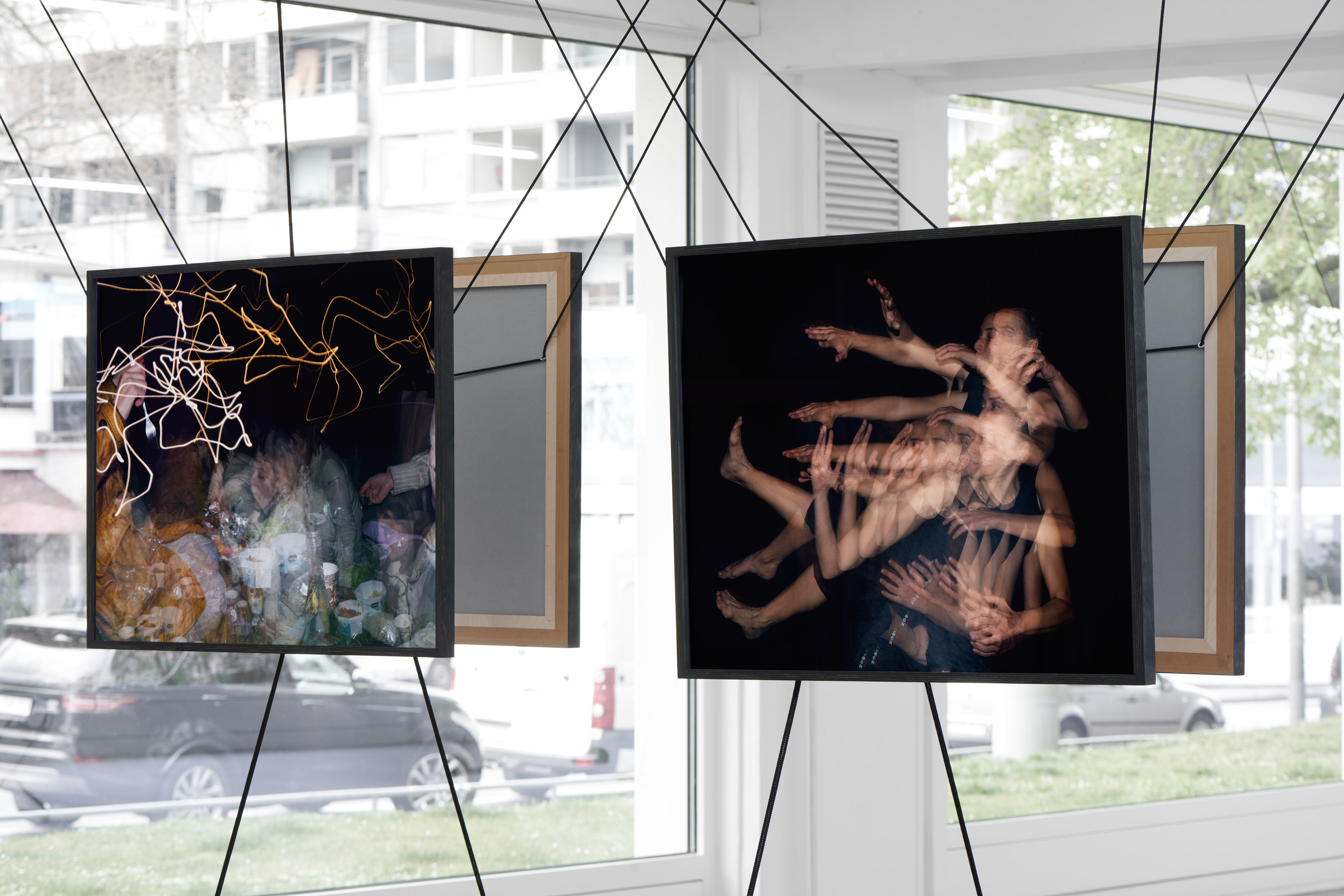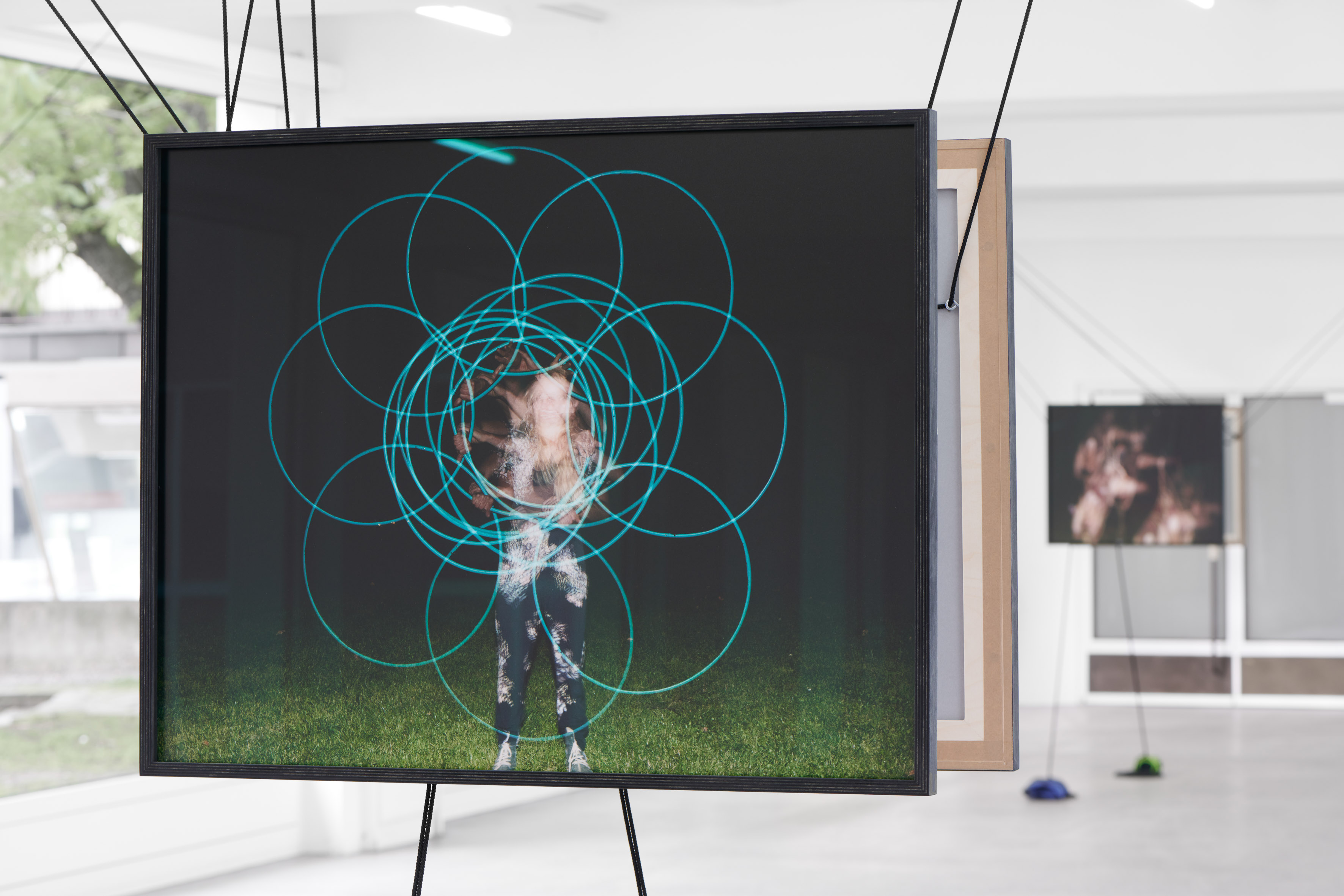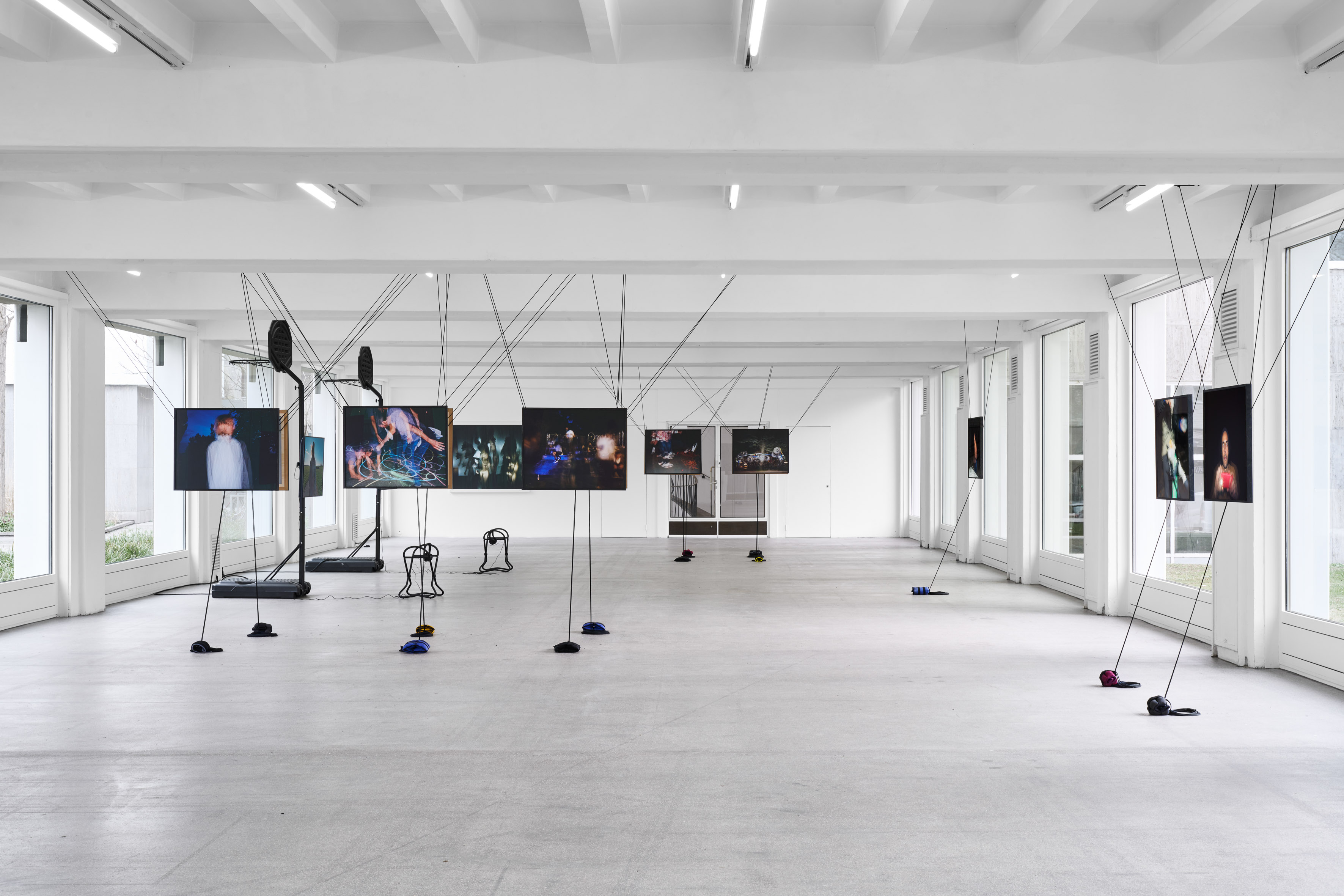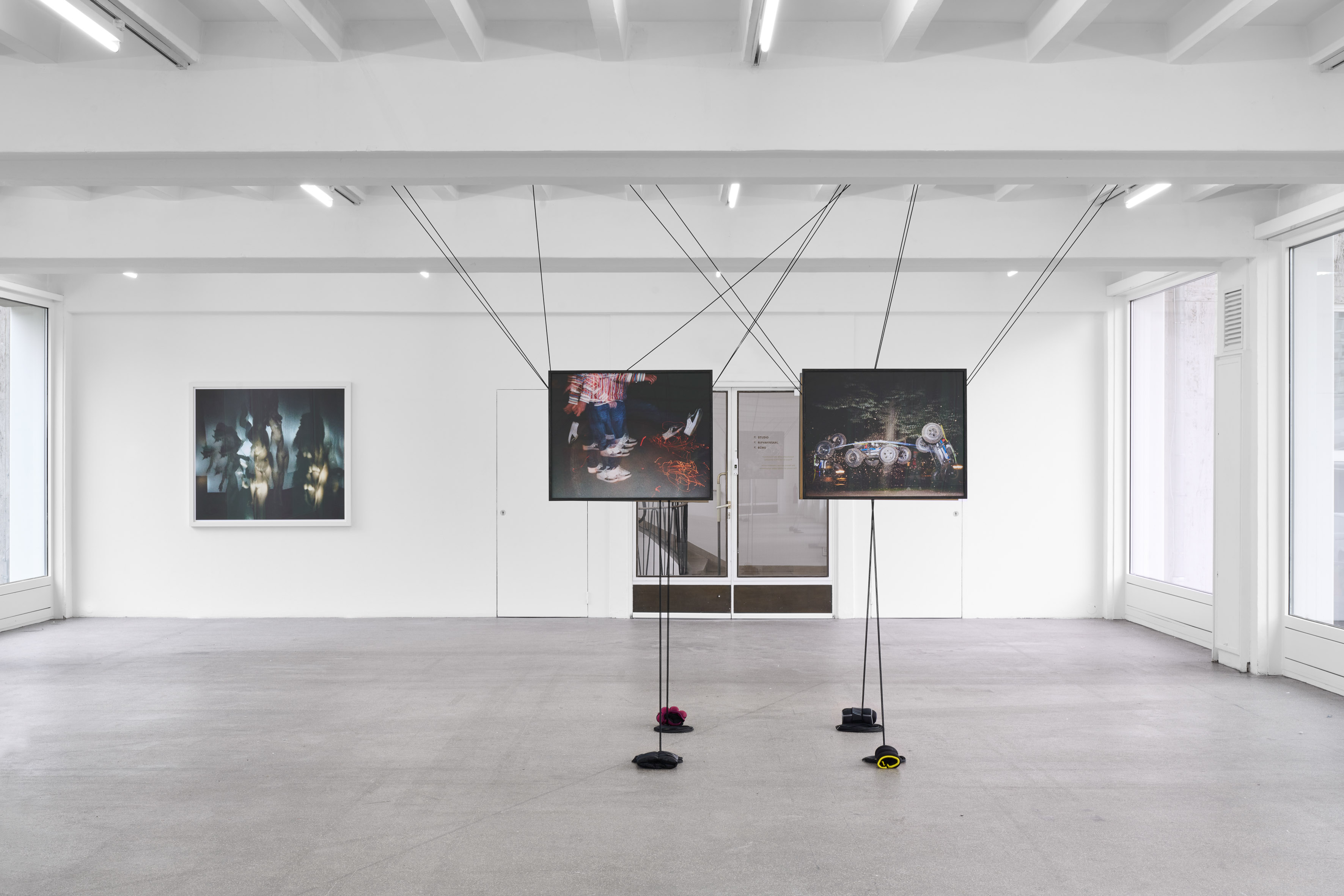YYYYMMDD >>> BACK HOME <<< >>> SELECTED FEATURES <<< >>> HIDDEN ARCHIVE <<<
[20220610]
GAP YEARS by LORETTA FAHRENHOLZ at KÖLNISCHER KUNSTVEREIN [from 20220319 to 20220626]
[Photos: Mareike Tocha] [Courtesy: the artist and Galerie Buchholz]










































Gap year: a reprieve from work and responsibility, time off before time starts again – or a chunk of time that lands in your lap when society unexpectedly stops.
A vast and relatively unregulated space, Berlin’s Tempelhofer Feld is built on ruptures reflected in its various historical incarnations, among other functions Germany’s first football training ground, a 19th century Sunday destination, NS parade site, a concentration camp, and, of course, Berlin’s airport during the Cold War Airlift. Fahrenholz’ photo series Gap Years depicts the flourishing of leisure activities and new hobbies during the pandemic, when the Feld became everyone’s cafe, gym, bar, club, pick-up spot and music venue. Recorded with strobe-like time-lapse photography that registers movement like in a frozen jelly, the works in the series show people in self-defence classes, playing ping-pong, roller-skating, or engaging in impromptu raves and remote-controlled car driving, open-air bondage and snacking. There is also a blurry close-up of tahini poured on one of the unpopular e-scooters (we are among irritable Berliners all right).
The contemporaneity of the activities cannot hide the belle-époque quaintness of the motif of leisure, or what Fahrenholz identifies as its ‘kitsch’ aspect. We have no illusions about leisure activities. As carefully measured breaks in the regime of work they can be the next best thing to being stuck in a rut. And in an urban context the display of street skill and everyday virtuosity is already inscribed in a layered visual economy: Fahrenholz’ photos trail instagrammable styles of social-media self-consumption but also the heroics of sports photography. Still, the social collapse of the pandemic provided an opportunity for other rhythms, for social reorganization on a micro-level, thus creating a space in which it was possible to get in touch with both dystopia and utopia.
The film Happy Birthday (2022) emulates the perspective of a first-person shooter video game through a sole protagonist who wanders aimlessly across the Tempelhofer Feld. Little windows appear with snippets of mobile-phone-recorded birthday greetings. As the film progresses, darkness falls on the lonely social choreography, a non-celebration with long-distance missives from friends and family who should have been present. The birthday boy’s blank expression and the absence of action build up emotional pressure and expectation, as the air around him is perforated with songs, encouragements or scolding, shared memories, saucy messages, and existential musings.
What is left, where are we now? Where do we go from here? – These questions emerge from the darkness surrounding the figures in Fahrenholz’ two works. To Henri Lefebvre, the ‘rhythmanalyst’ is someone who studies rhythms as a structure for the experience of space and time – someone who listens to “all sorts of already known practices” but first of all “to his body; he learns rhythm from it, in order consequently to appreciate external rhythms. His body serves him as a metronome.” What would Lefebvre’s rhythmanalyst make of a pandemic time out of whack? Lefebvre’s notion of the body as a metronome takes on other signification, both when held against the digitally scripted movements of the Happy Birthday protagonist and Gjon Mili’s photographic experiments from the mid-20th century that inspired Fahrenholz for her Gap Years series. New strobe technology enabled Mili to capture movement by arresting the human body in sequences in a single photographic image: Picasso making a drawing with light, a ballet dancer’s stride across the stage. Mili’s is a kind of portraiture in which psychology is reduced, or even effaced, in favour of speed.
In 1960s counterculture the spasmodic gestation of the strobe was employed to chop up time and dissolve the body. Tom Wolfe describes the dance floor of a 1960s ‘acid test’:
Ecstatic dancers – their hands flew off their arms, frozen in the air – a gleaming ellipse of teeth here, a pair of buffered highlit cheekbones there – all flacking and fragmenting into images as in an old flicker movie – a man in slices! – all of history pinned up on a butterfly board; the experience, of course.
The psychedelic sensibility for the non-human side of technology inspired the filmmaker Jonas Mekas to say that “since there is nothing but the white light in [the strobe], it represents…the point of death, or nothingness.” But it is not only visual shrapnel; there is a theoretical bent in the strobe, too, a crystalline ur-cinematic logic: “One could even say that it dramatizes the light itself.” On the thin line between emancipation and control, stimulus and trauma, the strobe summarizes the modern onslaught on the nervous system with instantly changing signals. In the 1950s, flicker technologies were used for electroencephalographic research documenting how changes in the electrical rhythms of the brain have diagnostic value. In the nerve-brain click-regime of our digital era such stimuli have plenty of exchange value, too.
“Writing in strobe” can invent “crazy speeds…where different themes connect up, and words form various figures according to the precipitous speeds of reading and association,” as Gilles Deleuze said about Hélène Cixous’ way of writing her way out of patriarchal regimes. In Fahrenholz, the icy strobe is no less of a poetics, a suitable aesthetic for our dreamless time. Departing from acceleration and Cixous’ call for “more body”, Fahrenholz instead presents meditations on the dissolution of normality and on caesuras in social time and space. Known rhythms of life begin to limp and falter as we are served up a new diet of (dis)embodiment, separation and togetherness, in the affective interstices between bodies and technologies. Maybe somewhere here, in a big blank space-time like the Tempelhofer Feld during the pandemic, we can find a way to acknowledge what happens – or what does not happen – as an event to be handed over to the future, so time can branch out into something new.
[Text: Lars Bang Larsen]
©YYYYMMDD 2021 All content and design by Daniela Grabosch + Ricardo Almeida Roque unless otherwise stated. Images, Videos and Texts can only be used under permission of the author(s).